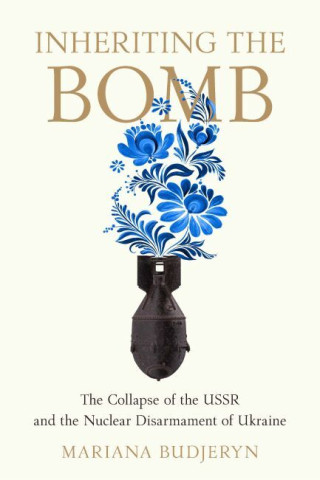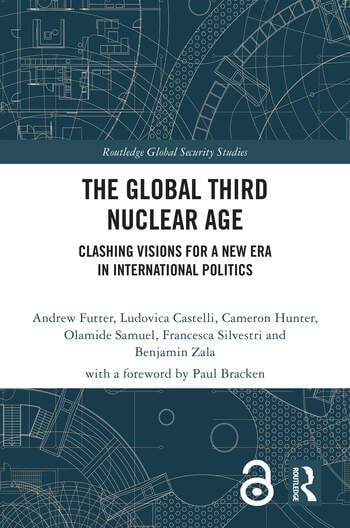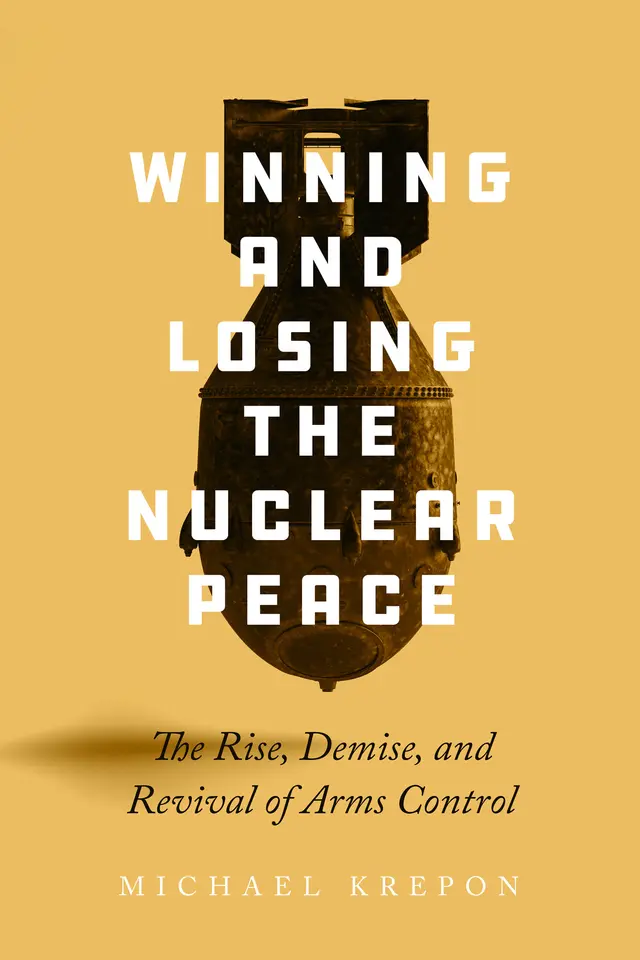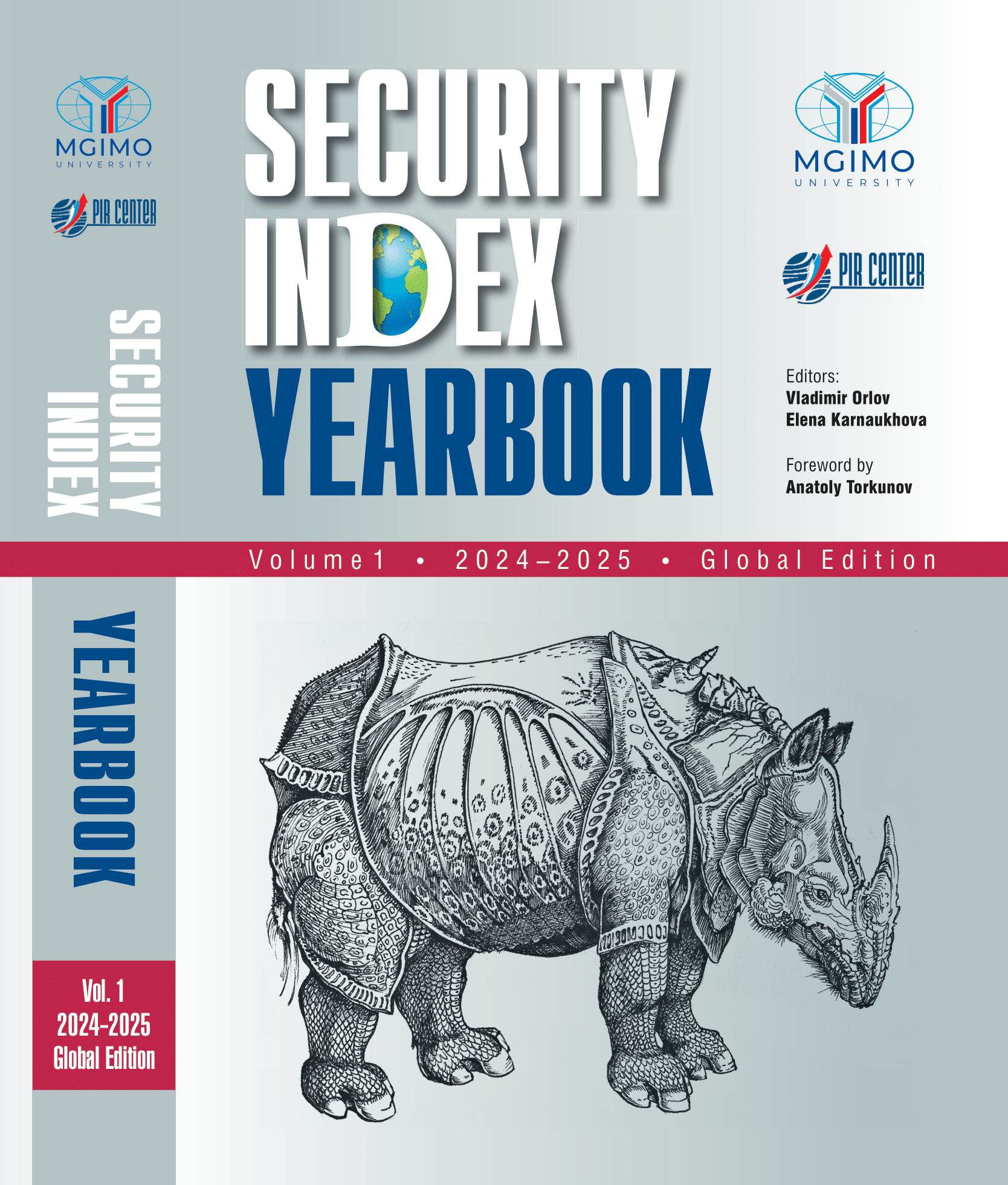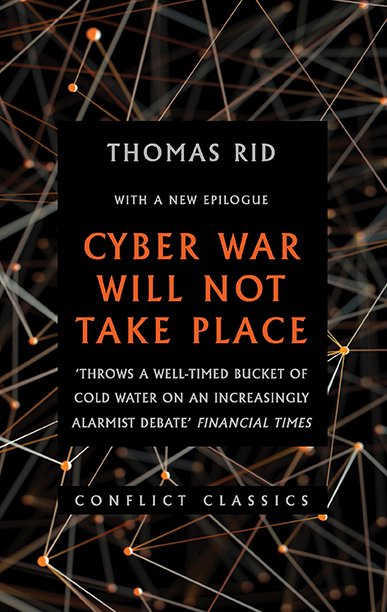Book Review
We publish reviews and speak about new books on international security issues
Ukraine: The Long Road to the NPT
Mr. Yuriy Shakxov,
Editor, Information, Publications & Digital Communications Program
July 23, 2025
Today, we are pleased to share a review by Mr. Yuriy Shakhov, Editor of the Information, Publications & Digital Communications Program, of Mariana Budjeryn’s book Inheriting the Bomb: The Collapse of the USSR and the Nuclear Disarmament of Ukraine.
Mariana Budjeryn. Inheriting the bomb: the collapse of the USSR and the nuclear disarmament of Ukraine. Baltimore: Johns Hopkins University Press, 2023. – 310 p.
ISBN: 978-1421445861
“Inheriting the Bomb: The Collapse of the USSR and the Nuclear Disarmament of Ukraine” is a thorough study of one of the most significant events in the history of international security: Ukraine’s nuclear disarmament process in the 1990s. The work combines historical analysis with reflections on international institutions and geopolitical forecasting, making it a unique contribution to the study of nuclear nonproliferation.
The book’s author, Mariana Budjeryn, is a scholar specializing in nuclear policy and international relations. She is affiliated with the Belfer Center for Science and International Affairs at Harvard University, where she focuses her academic efforts on nuclear disarmament and global security. Budjeryn also actively collaborates with research projects in the fields of nuclear history and nonproliferation. Her academic expertise and access to rare archival materials lend her voice significant authority in the field. In this work, she draws on a wide array of sources, including previously unexplored archival documents from Ukraine, Belarus, and Kazakhstan, as well as testimonies from key participants.
The book is divided into two major parts. The first section is dedicated to the context of the Soviet Union’s collapse and the issue of nuclear inheritance. Budjeryn opens with a description of the political and strategic situation that emerged after the USSR ceased to exist. She emphasizes that one of the largest nuclear arsenals in the world was left on the territory of the former Soviet Union. Ukraine, Kazakhstan, and Belarus found themselves in a unique position, inheriting substantial stockpiles of strategic and tactical nuclear weapons–an inheritance that could serve as both a means of defense and a source of instability. The question of who would control these weapons raised serious concerns within the international community, particularly in the United States and Russia.
Budjeryn offers a detailed account of the scale and significance of Ukraine inheriting the third-largest nuclear arsenal in the world, which included 176 intercontinental ballistic missiles and around 1,900 nuclear warheads. Ukraine also possessed infrastructure for missile production and uranium enrichment, potentially enabling it to develop its own nuclear arsenal. While Kazakhstan and Belarus quickly agreed to transfer their nuclear weapons to Russia, Ukraine took a more complex position, asserting its rights as one of the successors of the USSR.
The second part of the book focuses on Ukraine itself – its approach to the nuclear issue and the diplomatic negotiations that ensued. A key aspect of the book is the analysis of the role of international actors in Ukraine’s disarmament. Budjeryn examines how the United States and Russia cooperated to pressure Kyiv into relinquishing its nuclear arsenal. The U.S., intent on preventing the spread of nuclear weapons, used a combination of diplomatic pressure, economic incentives, and security assurances. Russia, according to the author, exploited Ukraine’s economic dependence and used political levers such as its support for pro-Russian sentiments in Crimea and eastern Ukraine (within their 1990s borders).
The author pays particular attention to the 1994 Budapest Memorandum, under which Ukraine agreed to relinquish its nuclear weapons in exchange for security assurances from the United States, the United Kingdom, and Russia. Budjeryn provides a critical analysis of the memorandum, highlighting its weaknesses, particularly the absence of enforcement mechanisms.
Budjeryn also addresses internal political and societal debates within Ukraine. She notes that opinions varied across the political spectrum regarding the necessity of retaining a nuclear arsenal. Some leaders, including members of the military, viewed nuclear weapons as a deterrent, especially in light of potential threats from Russia. Others argued that maintaining such an arsenal was economically and technically unfeasible for the newly independent Ukraine. The political decision to disarm was ultimately driven by Ukraine’s aspiration to integrate into the international community and build democratic institutions.
One of the book’s key conclusions is that the international nuclear nonproliferation regime played a crucial role in shaping Ukraine’s expectations and behavior. Budjeryn emphasizes that the rules established by the Nuclear Non-Proliferation Treaty (NPT) largely defined the parameters within which the new independent states could act. However, she also underscores the weaknesses of the international security system – including the NPT itself – especially in light of the “aggression” against Ukraine. Budjeryn contends that Ukraine’s nuclear disarmament was not only a unique episode in history but also an important lesson for the future. The questions the book raises remain highly relevant today: Can international security guarantees truly replace nuclear weapons? How can international commitments be enforced? How can nuclear blackmail be prevented? These issues are especially pertinent in light of the ongoing conflict in Ukraine and growing global tensions between nuclear powers.
The book’s central thesis is that Ukraine’s disarmament was not merely the result of external pressure but a conscious choice “in favor of integration into the international community” and “building a democratic state.” Budjeryn convincingly supports this idea with factual data and documentary evidence. Despite numerous challenges and risks, the decision to forgo nuclear weapons was, in her view, the only right and positive step for Ukraine in its pursuit of international integration.
Among the book’s strengths are its well-organized structure and clear narrative style. Budjeryn skillfully combines historical and analytical approaches, offering readers a comprehensive picture of events. Her research is grounded in a wide range of sources, including archival documents from Kyiv, Minsk, and Almaty, as well as Western sources. The text is supplemented by maps and historical photographs that help visualize complex issues. Substantively, the book is well-balanced. Budjeryn analyzes not only the actions of major powers like the U.S. and Russia but also internal Ukrainian debates. She shows how political, economic, and cultural factors influenced decision-making and stresses that disarmament was a deliberate choice rather than a coerced step.
Nevertheless, the book is not without its shortcomings. Some chapters are overloaded with technical details that may be excessive for the general reader, potentially hindering comprehension of the main narrative. For instance, the discussion of the technical aspects of nuclear weapons and international treaties can distract from the core storyline. Additionally, the book could have devoted more attention to assessing the long-term consequences of disarmament, especially considering it was published in 2023. While the events of 2014 are mentioned, they are not analyzed in sufficient depth within the context of Ukraine’s nuclear choices. Moreover, the book offers virtually no practical recommendations on how to strengthen international security guarantees for countries that choose to disarm. Budjeryn also overlooks the role of European states in Ukraine’s disarmament process. While the U.S. and Russia are the primary focus, the role of the EU and neighboring countries like Poland and Hungary is largely ignored. A broader analysis could have provided a more complete picture.
It is also important to note that despite its high research value, the book suffers from clear political bias. Russia’s role in the disarmament process is presented almost exclusively in a negative light, rendering the analysis one-sided and lacking objectivity. The author repeatedly suggests that Russia was intent on undermining Ukraine’s independence and manipulating the nuclear issue for its own benefit. However, this perspective oversimplifies the situation and fails to take into account the more complex diplomatic realities. While Russia certainly sought Ukraine’s disarmament, this was also in line with U.S. policy, which opposed the emergence of a new nuclear state. Moreover, Moscow did not have complete control over the process–Ukraine conducted independent, and at times even separate, negotiations with Washington, reflecting its agency in international relations. Budjeryn also fails to acknowledge that Russia, along with the U.S., offered Ukraine economic and technical assistance during the disarmament process. The book paints Moscow as the main source of instability, while the U.S. is portrayed solely as a guarantor of international order–an oversimplified and questionable narrative.
The Budapest Memorandum receives considerable attention in the book, yet the analysis is likewise politically charged. Budjeryn claims that Russia’s alleged violation of the memorandum in 2014 proves the complete failure of international security guarantees. However, she gives little consideration to the memorandum’s legal weaknesses. The document was not legally binding and lacked enforcement mechanisms. The U.S. and U.K. also failed to fully deliver on their commitments, yet this is barely mentioned. The author does not analyze how NATO expansion or broader geopolitical shifts may have influenced the deterioration of Russian-Ukrainian relations, even though these factors are highly relevant.
Budjeryn’s narrow focus on the confrontational aspects of Russia-Ukraine relations also seems problematic. Instances of cooperation between Moscow and Kyiv are either mentioned in passing or omitted altogether. This approach gives the impression that relations were solely defined by conflict, whereas in reality, the 1990s and early 2000s saw significant collaboration–particularly in the areas of nuclear disarmament and nonproliferation (including close coordination during the NPT review process and joint initiatives, such as on Article X.1 of the Treaty), as well as military agreements and economic ties.
Although the book discusses disarmament negotiations, it barely acknowledges the significant role that cooperation between Ukraine and Russia played in the process. An essential element was the maintenance of operational control over nuclear forces until their dismantlement. Moscow and Kyiv developed a mechanism for transferring nuclear weapons to Russia for disposal, which helped prevent proliferation. Russia provided extensive technical support for dismantling warheads, since Ukraine lacked the necessary infrastructure. Additionally, Ukraine was compensated with nuclear fuel for its power plants, ensuring the country’s energy stability. Russia fulfilled its obligations regarding Ukraine’s nuclear disarmament, and the process unfolded through diplomatic engagement – not merely through pressure and confrontation, as the book suggests.
Economic cooperation during the 1990s and early 2000s is also ignored. The fact remains that for decades following the collapse of the USSR, Russia was Ukraine’s main economic partner. Despite growing disagreements, a significant portion of Ukraine’s economy was oriented toward the Russian market, and Russian investments played a key role in sustaining Ukrainian industry.
The author ultimately could not resist the temptation to scold and lecture Russia. Yet despite this notable shortcoming, Inheriting the Bomb remains a valuable academic study for anyone interested in international relations, history, security, and nuclear disarmament. It is based on a vast array of sources and provides insight into the complex diplomatic decisions of the era. The work is a meaningful addition to the literature on nonproliferation and international security. Many archival materials are unique, as are the author’s interviews with Ukrainian politicians, military officials, and experts. However, the book’s pronounced political bias undermines the objectivity of its analysis. Its one-sided portrayal of Russia’s role, insufficient attention to diplomatic alternatives, and limited legal analysis of the Budapest Memorandum make it appear more ideological than neutral.
Nonetheless, despite these flaws, the book serves as a key source for understanding this unique episode in the history of nuclear nonproliferation and global security. It should be read critically, with the understanding that many of the author’s conclusions reflect contemporary political perspectives as much as historical analysis.
Keywords: Global Security; Nuclear Nonproliferation; Ukraine
NPT
E16/SHAH – 25/07/23


